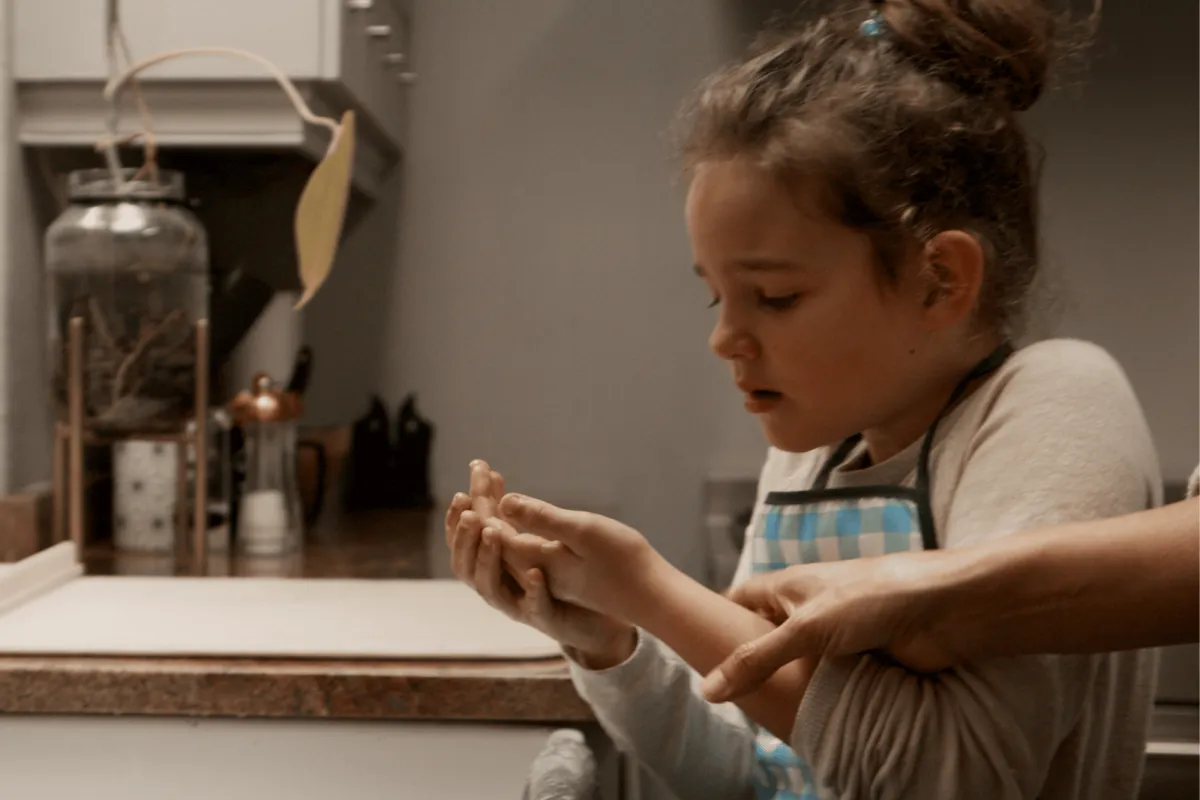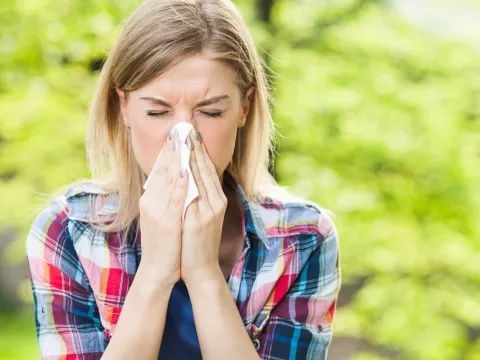- AdventHealth
Choose the health content that’s right for you, and get it delivered right in your inbox.

Urgent Care for Burns: When to Go and What Urgent Care Can Treat
Getting burned, whether from a kitchen mishap, a hot liquid spill or an outdoor accident, is painful and scary. But knowing where to turn when burns occur can help you feel prepared for the unexpected.
If a burn happens while cooking late at night or on a weekend camping trip, visiting an urgent care for burns can be a fast, effective option for treating minor injuries and easing pain.
But how do you know if urgent care is the right place to go or when a burn requires emergency care? Keep reading to learn more about the different types of burns and when to go to the ER versus urgent care for burns.
Types of Burns and Their Severity
Burns are defined by their severity and how deeply they affect the layers of the skin.
First-degree and most second-degree burns are typically considered minor and can be treated at your local urgent care center. Third-degree burns are the most severe and require an immediate trip to the emergency room.
Burn Type | Skin Layers Affected | Symptoms | Scarring Risk | Where to Get Treatment | Common Causes |
| First-Degree Burns | Outer layer (epidermis) | Red, dry, painful, no blisters | Unlikely | Home or urgent care | Mild sunburn, brief contact with hot items (e.g., curling iron), minor scald |
| Second-Degree Burns | Epidermis and dermis | Redness, blisters, swelling, moist skin, very painful | Possible | Urgent care (depends on size and location) | Serious sunburn, hot liquid scald, chemical or friction burns |
| Third-Degree Burns | All layers of skin | Dry, leathery texture; yellow, brown, white, or black skin; often painless (nerve damage) | High | Emergency room only | Fire, electrical burns, prolonged contact with hot objects |
Superficial Burns: First-Degree Burns
- Affect the outer layer of skin (epidermis)
- Red, dry, painful and no blisters are present
- Normally do not cause scarring
- Usually minor and treatable at home or at urgent care
- Examples include mild sunburn, scalding from hot water or burns from quick contact with a hot item like a curling iron
Partial-Thickness Burns: Second-Degree Burns
- Affect both the first and second layers of skin (epidermis and dermis)
- Cause redness, blistering, swelling and have a moist appearance and are very painful
- May cause scarring
- Some second-degree burns are treatable at urgent care, depending on the size and location of the injury
- Examples include serious sunburn, scalding from a hot liquid, chemical burn or friction burn caused by abrasion
Third-Degree Burns (Full-Thickness Burns)
- Extend through all skin layers
- Dry, leathery, hard skin
- Skin may appear yellow, brown, white or black
- No pain due to nerve damage
- May require specialized treatment and skin grafting
- Require emergency care, not urgent care
- Examples include burns sustained from a fire, an electrical burn or a burn from being in extended contact with a hot object
When to Go to Urgent Care for a Burn
Not all burns require medical attention. Many times, minor burns, like mild sunburn from being outside too long without sunscreen or briefly touching a hot pot, can be treated at home.
But if you think your burn needs more than at-home care, you should go to urgent care versus the ER for burn treatment if the following apply:
- Measures less than three inches in diameter
- Is superficial (only affecting the top layer of skin)
- Is a second-degree burn where the blisters have or haven’t opened
- Requires pain management
Urgent care clinics are typically equipped to treat first-degree burns, as well as second-degree burns that cover less than 10% of the body's surface.
Urgent care can treat first-degree burns that are:
- Less than three inches in diameter
- Not located on your face or other sensitive areas of the body
- Only affecting the top layer of your skin
- Causing mild redness and pain
- Not blistering
And your local urgent care center can treat second-degree burns that are:
- Smaller than three inches or takes up less than 10% of your body's surface area
- Not on sensitive areas (face, hands, feet, head, groin or joints)
- Not showing signs of infection
- Not accompanied by breathing issues or other complications
- In need of pain management
Benefits of Urgent Care for Minor Burns
For minor first-degree and second-degree burns, a walk-in urgent care clinic, like an AdventHealth Centra Care location, offers you the opportunity to get quick treatment and pain relief when you need it.
If you or a loved one suffers a first- or second-degree burn in the evening or on a weekend or holiday, you can immediately get the care you need at urgent care. You can then follow up with your AdventHealth primary care provider on their next available day.
What to Expect at Urgent Care for a Burn
You can walk into any AdventHealth Centra Care urgent care center near you for burn treatment without making an appointment.
A member of our friendly medical team will check you in and ask you to fill out a few forms about your medical history and what brought you in. One of our board-certified AdventHealth Centra Care providers will review your current symptoms and evaluate your burn and its severity.
If your doctor assesses your burn to be a first- or minor second-degree burn, they’ll treat it by:
- Cooling down the affected area
- Cleaning the burn to help keep infection at bay
- Applying topical antibiotic ointments
- Covering the burn with a bandage
- Providing a prescription for pain medication, as needed
- Giving you a tetanus shot if needed
- Supplying follow-up care instructions
- Issuing a referral if they think your burn may require additional treatment
At-Home Treatment Tips if Your Burn Is Minor
If your burn is minor, the good news is that you can begin treatment at home before going to urgent care. And some burns, like a mild sunburn, can usually be treated at home with the right know-how.
If you experience a minor burn, follow the steps below, including:
- Cool the burn under cool running water or with a wet compress using a clean cloth (no ice!)
- Gently clean the burn with soap and water
- Apply aloe vera gel or petroleum jelly to the affected area to keep it moist
- Cover the burn with a clean, non-stick bandage or gauze
- Don't break any blisters — they will heal on their own
- Take over-the-counter pain relievers, as needed
- Keep an eye on your burn for signs of infection or increased pain
- Protect the burned area from the sun until it heals
- Avoid home remedies like butter or toothpaste
When to Go to the Emergency Room for a Burn
Some more serious burns, including all third-degree burns, require a visit to your nearest ER.
Head to your nearest emergency room or call 911 if you experience the following:
- Burns covering a large area of the body — more than three inches or greater than 10% of your body’s surface area
- Burns on face, head, hands, feet, genitals or major joints
- Skin looks leathery and has a charred or white appearance
- No pain due to damaged nerves
- Electrical or chemical burns
- Signs of infection (pus, fever or red streaks)
- Difficulty breathing from inhalation or other signs of distress
Final Thoughts: Know When to Seek Help
Burns can happen without notice and can be very painful. It’s important to fully understand when you should go to the ER or urgent care for burns, in case you ever need to make a quick decision if you or a loved one is burned.
The easiest way to remember is that minor burns mean heading to urgent care, while serious burns require a trip to the ER. However, it’s always important to trust your instincts and not to delay care.
When in doubt, call your nearest AdventHealth Centra Care urgent care center for guidance.
Frequently Asked Questions About Visiting an Urgent Care for Burns
Can urgent care treat chemical burns?
Yes, you can visit your local urgent care for burns caused by chemicals, but only if they are minor, less than three inches in diameter and not located on a sensitive area of the body, like the face or groin. If the chemical burn is larger, seems very deep and is showing any signs of infection, make sure to visit your nearest emergency room immediately.
How do I know if a burn is infected?
If a burn becomes infected, some of the telltale signs include the following:
- Dead tissue that looks black around the burn
- Fever and/or chills
- Foul odor emitted by the burn
- Increased redness or swelling
- Intensified pain
- Pus or discharge from the burn
- Red streaks radiating from the burn
Will urgent care prescribe burn ointment or pain medication?
Yes, when you visit urgent care for burns, your doctor can provide you with antibiotic ointments for burns, as well as a prescription for pain medication as needed.
Recent Blogs
-

Pruebas de Influenza Cerca de Mí
Encuentre tratamiento contra la gripe cerca de Sanford ahora. Obtenga atención urgente para los síntomas de la gripe con pruebas y tratamiento de la gripe en una de nuestras ubicaciones de Sanford...
-

Tratamiento Rápido y Efectivo Contra La Influenza en Orlando, Florida
Este diciembre de 2022, ya estamos bien entrados en la temporada de gripe, y parece ser una de las temporadas de gripe más graves en más de una década.
